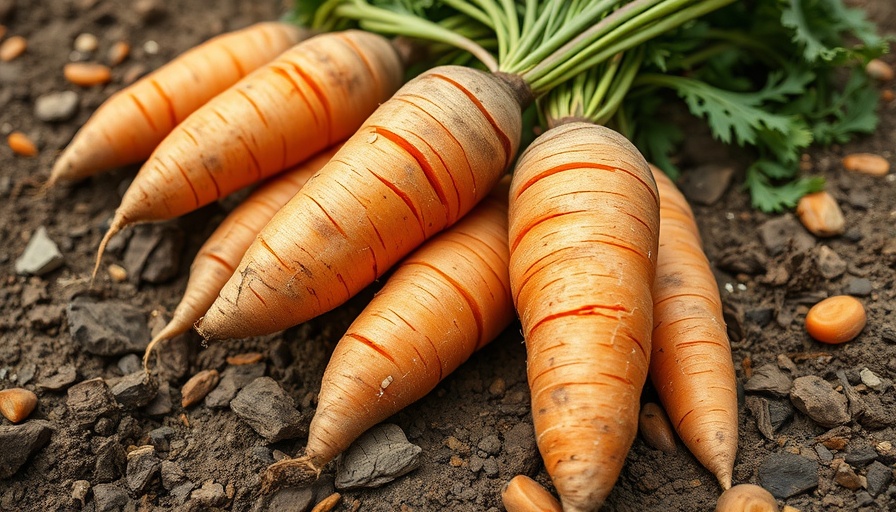
The Joy of Harvesting Root Vegetables
There's something extraordinary about pulling up root vegetables from the ground; it mirrors the excitement of unveiling a hidden treasure. For many gardeners, the thrill lies not just in the anticipation but in the pristine beauty of each harvest. This article delves into a common issue faced by gardeners — carrot cracking — and offers insightful tips on prevention and care.
Understanding Why Carrots Crack
Carrots are delicate, sensitive plants that often fall prey to cracking, typically due to fluctuations in moisture levels. When there is a sudden influx of water, the growing roots swell rapidly, creating internal pressure that can lead to splits. This phenomenon frequently occurs during the hot summer months or following a drought, where sporadic heavy rains can catch gardeners off-guard.
Moreover, freezing temperatures can exacerbate the problem. When carrots freeze and then thaw, expanded cells may damage the root, further contributing to cracking. For those eager to avoid the disappointment of pulling out a split carrot, understanding these factors is pivotal.
Preventing Carrot Cracking: Best Practices
Fortunately, there are numerous strategies gardeners can adopt to mitigate this issue:
- Choose Resistant Varieties: Some carrot cultivars are bred specifically for drought resistance and reduced cracking. Researching and selecting these hardier options can pay off immensely.
- Soil Management: Amend your soil with organic materials to enhance its moisture retention capabilities. Well-aerated soil helps regulate moisture levels more consistently.
- Implement a Reliable Watering Schedule: Regular, controlled watering helps maintain steady moisture levels. Most carrots require about an inch of water weekly, but this might double during hotter spells.
- Use Mulch: Applying a thick layer of mulch can regulate soil temperature, conserve moisture, and inhibit weed growth that competes for nutrients, making it a valuable tool in any gardener's arsenal.
- Harvest at the Right Time: Being vigilant about harvest timing is critical. Carrots that are left in the ground too long may not only crack but also become woody and less palatable.
Evaluating Cracked Carrots: Are They Still Edible?
Even if you find cracked carrots, don't despair! Although unsightly, much of the root remains edible. Simply peel or trim away the damaged sections, and you can still enjoy the fruit of your labor. Such experiences serve as valuable lessons, reinforcing the importance of moisture management in your gardening practices.
Engaging in Sustainable Gardening Practices
As gardeners, one of the rewarding aspects of maintaining our green spaces involves adopting sustainable practices. Beyond preventing carrot cracking, remember the broader implications of your gardening habits. With a focus on organic methods, thoughtful water management, and soil health, you not only achieve a vibrant harvest but also contribute to a healthier ecosystem.
Conclusion: Embrace the Learning Curve
Every gardening experience, including those with cracked carrots, is an opportunity for growth — both for the plants and the gardener. Embrace the adventure, and while setbacks may occur, remember that each season brings new chances to improve and refine your gardening techniques. Here's to growing delicious carrots and enjoying the satisfaction that comes from nurturing your backyard vegetables!
 Add Row
Add Row  Add
Add 




Write A Comment